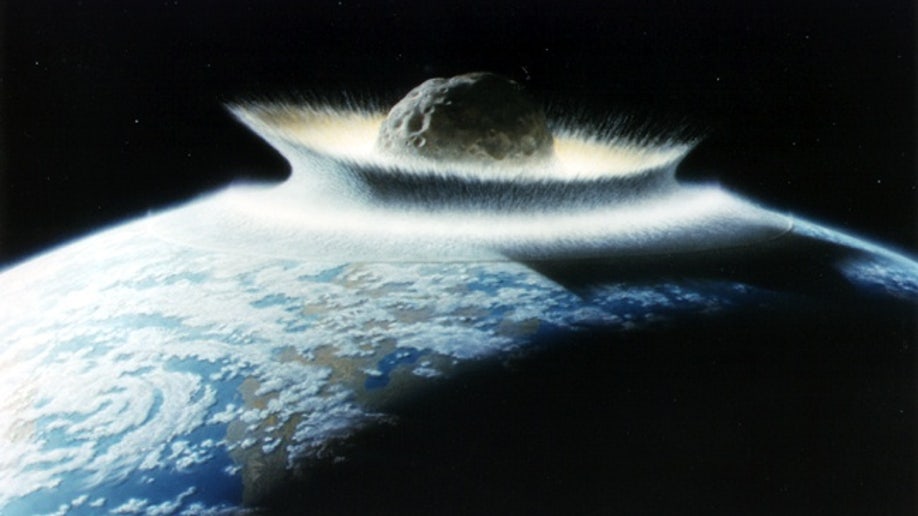How to Prevent an Asteroid Impact
{{#rendered}} {{/rendered}}
Artist's concept of a catastrophic asteroid impact with the early Earth. An impact with a 500-km-diameter asteroid would effectively sterilize the planet. Russia is considering sending a spacecraft to a large asteroid set to fly near Earth in 2029, to knock the space rock off its path and prevent a possible collision with Earth, the head of the country's space agency said Wednesday. (NASA/Don Davis)

NASA scientists recalculated the path asteroid Apophis, seen here, in early October. The refined path indicates a significantly reduced likelihood of a hazardous encounter with Earth in 2036. (UH/IA)
The Apophis asteroid is approximately the size of two-and-a-half football fields. It's still too far away to see clearly, but up close would probably look like this this, a color image of Eros taken by NASA on February 12, 2000, at a range of 1100 miles. The image shows approximately the color that Eros would appear to the unaided human eye. Its subtle butterscotch hue is typical of a wide variety of minerals thought to be the major components of many asteroids. (NASA/JPL/JHUAPL)
Initially, Apophis was thought to have a 2.7 percent chance of impacting Earth in 2029. Additional observations of the asteroid in October ruled out any possibility of an impact in 2029. Nevertheless, Russia is considering sending a spacecraft to a large asteroid to knock it off its path and prevent a possible collision with Earth. The asteroid is expected to make a record-setting approach to Earth on Friday, April 13, 2029, when it comes no closer than 18,300 miles above Earth's surface. (JPL/NASA)
An artist's impression of a major impact event. The collision between Earth and an asteroid a few kilometres in diameter releases as much energy as the simultaneous detonation of several million nuclear bombs. So how could Earth's scientists prevent such an impact? (Wikipedia/Fredrik)
One way scientists have proposed to deal with an asteroid impact: a space tractor. Here, an artist's concept of such a tractor towing an Apophis-like asteroid away from a collision course with Earth. (Dan Durda, FIAAA/B612 Foundation)
Another theory on how to deal with potential near earth impacts: Send a satellite out to plant explosives, as graphically illustrated in movies like Deep Impact. Here, a NASA illustration of what such a mission might look like. (NASA)
Another potential way to mitigate the potential risk of an asteroid impact: Attach a large enough solar sail directly to the cosmic rock, using the pressure of the sun to shift the object's orbit. (NASA/Marshall Space Flight Center)
